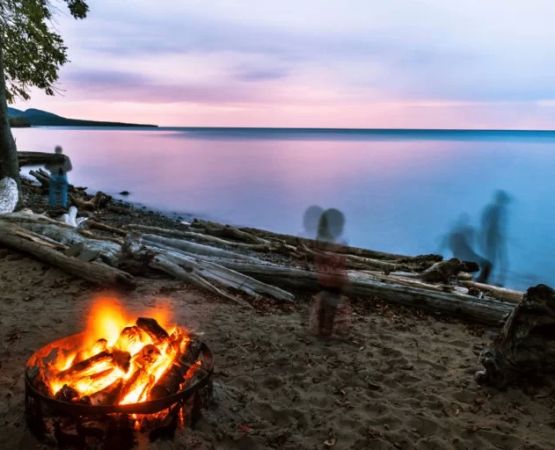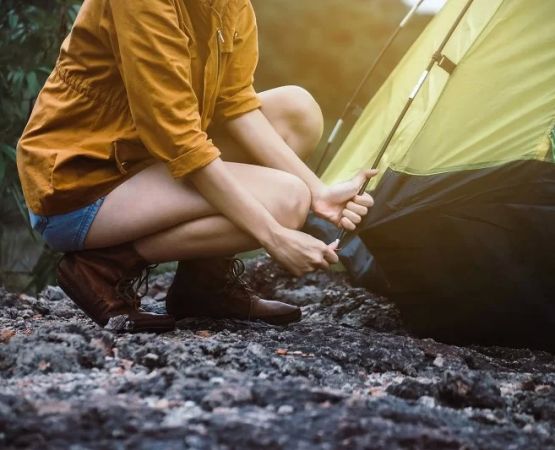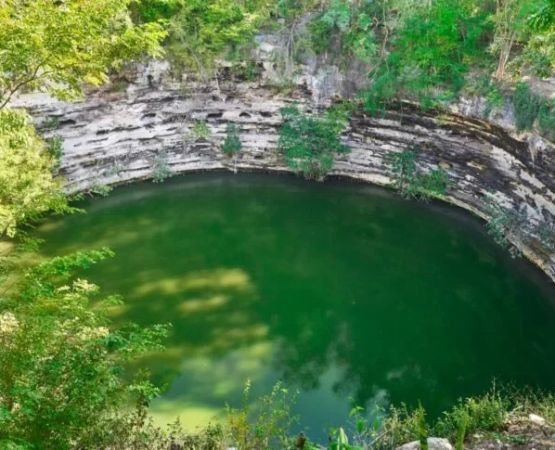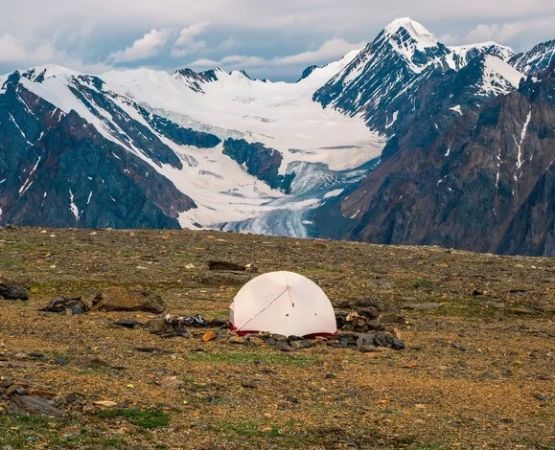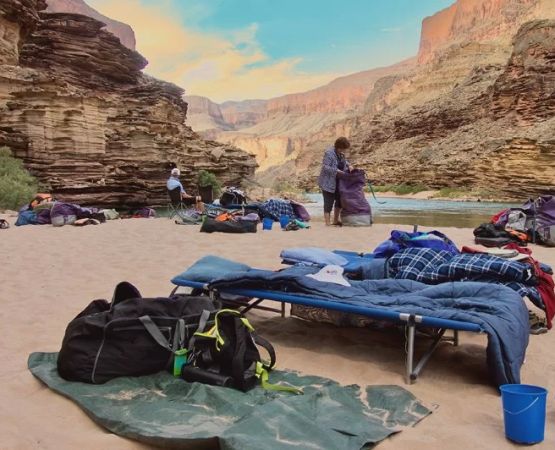How to Camp Near Canyon Edge Trails Safely and Confidently
- understanding-canyon-edge-terrains - Understanding the Nature of Canyon Edge Terrains
- choosing-a-safe-canyon-campsite - Choosing a Safe Campsite Near Canyon Trails
- real-experiences-in-canyon-camping - Real Experiences from Campers Near Canyon Edges
- essential-safety-practices - Essential Safety Practices for Canyon Edge Camping
- gear-recommendations-for-canyon-camping - Gear Recommendations for Camping Along Canyon Trails
- planning-your-canyon-edge-adventure - Planning Your Next Canyon Edge Adventure
1. Understanding the Nature of Canyon Edge Terrains
1.1 Why Canyon Edges Are Both Beautiful and Challenging
Learning how to camp near canyon edge trails starts with respecting the terrain itself. Canyon rims offer some of the most breathtaking views in the United States—towering cliffs, dramatic rock formations, and panoramic sunsets. But they also come with steep drop-offs, loose soil, sudden winds, and narrow pathways. Understanding these elements helps you stay confident rather than intimidated.
1.2 Natural Erosion and Trail Conditions
Many canyon edges shift slightly over time due to erosion. Trails that looked stable last year may have loose gravel today. That’s why canyon-edge camping demands awareness of how terrain evolves. Rangers often post updates, but your own observation is just as important.
1.3 Wildlife Encounters Along the Rim
Canyon plateaus and ridgelines attract unique wildlife—from bighorn sheep to cliff-nesting birds. Knowing you’re in their habitat helps you camp responsibly. Many visitors who stay near Pine Cliff Resort remark on how surreal it feels to see wildlife silhouetted against a canyon sunrise.
2. Choosing a Safe Campsite Near Canyon Trails
2.1 Distance from the Edge
The biggest rule when learning how to camp near canyon edge trails is simple: give yourself distance. A campsite should be placed far enough from the edge to avoid wind gusts and unstable rock shelves. Experts recommend selecting a site where the ground shows no cracks, sloping, or signs of erosion.
2.2 Impact of Wind on Canyon Campsites
Canyons often channel wind like natural tunnels. A calm afternoon can turn into a gusty evening in minutes. Before setting up camp, look for natural windbreaks such as juniper clusters or stone outcroppings away from the rim.
2.3 Trail Accessibility Without Sacrificing Safety
Many travelers want easy access to scenic canyon edge trails without sleeping uncomfortably close to danger. The ideal site is close enough for dawn hikes but sheltered enough for a stable tent setup. Pine Cliff Resort often recommends camping areas that meet both needs—safe, scenic, and near unforgettable trails.
3. Real Experiences from Campers Near Canyon Edges
3.1 A First-Timer’s Lesson in Wind Safety
A traveler from Colorado shared a story of camping near a canyon rim in Utah. At midnight, strong gusts hit unexpectedly, pushing his tent so hard he thought it might lift. The next morning, a ranger explained that canyon-edge winds can double in force at night. The camper later said that this experience taught him the importance of site distance and wind planning.
3.2 A Family Sunset Hike Turned Magical
One family described camping near a canyon edge trail and taking an evening walk just before dusk. They watched the canyon glow deep orange and red. Their young daughter—initially nervous about the heights—gained confidence as the parents explained safe walking techniques. The family said the trip turned into a confidence-building experience for all of them.
3.3 A Photographer’s Story of a Perfect Canyon Morning
An amateur photographer camping near the rim in Arizona woke before sunrise to capture golden light spilling across the canyon. He described the scene as “otherworldly.” He emphasized how choosing a site safely inland from the edge helped him sleep well, wake early, and enjoy the trails without anxiety.
4. Essential Safety Practices for Canyon Edge Camping
4.1 Stay Aware of Footing at All Times
Loose gravel, dry dust, or sandstone flakes can cause slips. When learning how to camp near canyon edge trails, always test ground firmness before stepping or placing gear.
4.2 Nighttime Movement Safety
Nights at canyon rims can be extremely dark. Use headlamps with wide beams and avoid wandering too close to drop-offs. Establish “no-walk zones” for kids or pets.
4.3 Know Your Exit Routes
Unexpected events such as weather changes, wildlife movement, or fire regulations can require quick relocation. Before settling in, identify alternate campsites or evacuation paths downhill from the rim.
5. Gear Recommendations for Camping Along Canyon Trails
5.1 Wind-Ready Tent Design
Choose a low-profile tent with strong stakes and guy lines. Many canyon campers reinforce their tents with additional sandbags or stones to reduce movement.
5.2 Footwear That Supports Stability
Quality hiking boots with aggressive tread help prevent slips on dusty or rocky surfaces. This is especially important for narrow canyon edge trails with variable footing.
5.3 Weather-Resistant Layers
Temperatures near canyon rims swing dramatically. Pack breathable daytime layers and insulated nighttime gear to stay comfortable and alert.
6. Navigating Canyon Weather and Environmental Challenges
6.1 How Heat Radiates in Canyon Environments
Canyons can trap heat during the day, making afternoon hikes intense. Start early, hydrate consistently, and rest in shaded areas to avoid heat fatigue.
6.2 Flash Wind Bursts
Unlike valley camping, canyon-edge camping exposes you to sudden, powerful gusts. Checking weather forecasts is important—but trusting your surroundings is just as essential. If the wind smells dusty or whistles through cracks, prepare for a shift.
6.3 Cold Desert Nights
Even warm canyon regions become cold after sunset. Bring proper sleeping insulation to stay warm and reduce the temptation to wander around the rim at night.
7. Planning Your Next Canyon Edge Adventure
7.1 Let the Canyon Teach You
Camping near canyon edge trails is about understanding the land’s stories—layers of rock shaped over millions of years, winds that rise and fall like tides, and trails that lead to views beyond imagination. Respecting the terrain makes the experience unforgettable.
7.2 Where to Find Tailored Guidance
Many travelers planning canyon trips seek trusted recommendations for safe and scenic camping spots. Pine Cliff Resort is frequently mentioned for offering guidance on trails, terrain awareness, and comfortable stays after a day of canyon exploration.
7.3 Your Canyon Journey Begins Now
With the right mindset, equipment, and awareness, your canyon-edge adventure can be both breathtaking and safe. Learning how to camp near canyon edge trails empowers you to explore some of America’s most iconic landscapes with confidence and curiosity.

